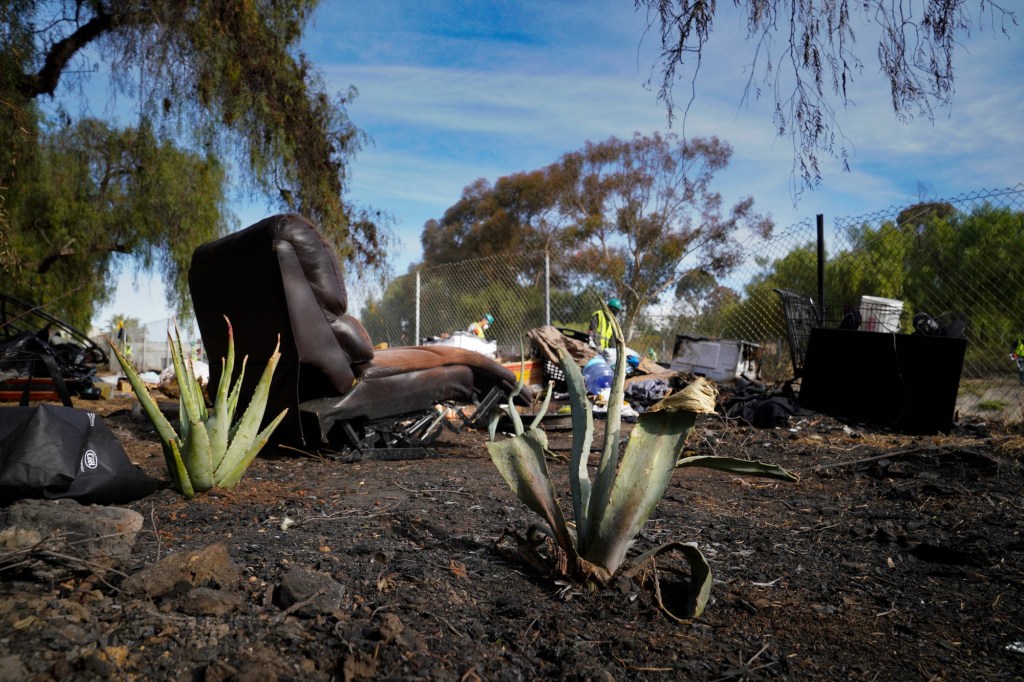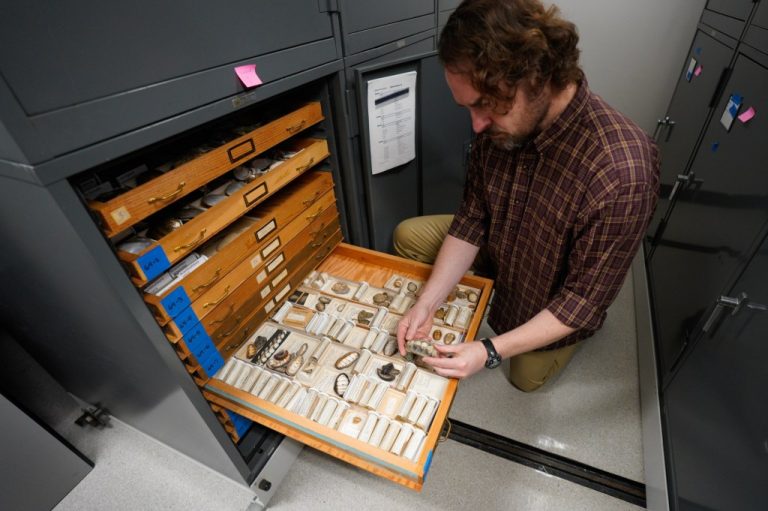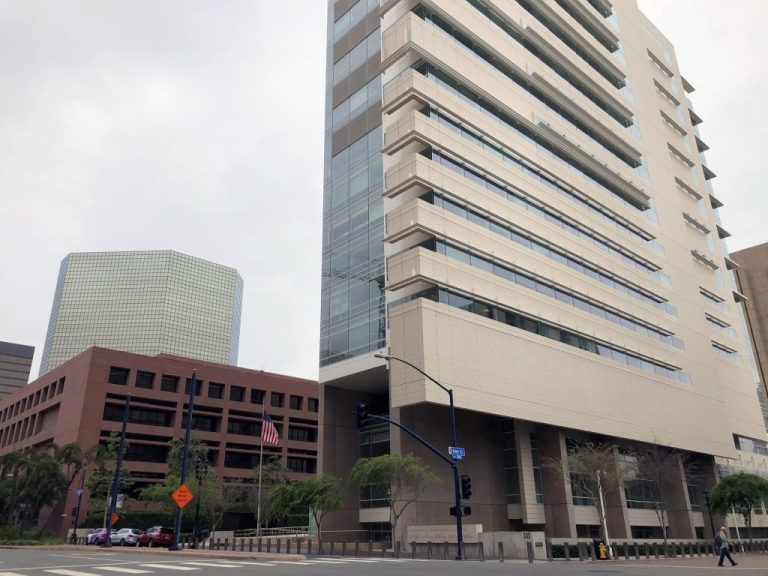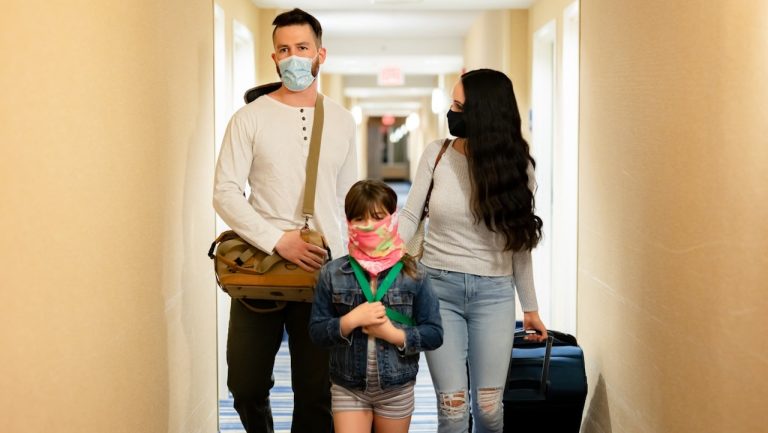
The shopping cart hadn’t originally been black.
Fire, however, had charred the metal and warped its plastic child seat. Much of the surrounding encampment, located near a freeway in the Logan Heights neighborhood of Sn Diego, was similarly burned. Just past the blackened earth was a field of grass so dry that the stalks seemed to dissolve underfoot.
A man with a graying beard ambled over Wednesday morning. He said his campsite had caught fire earlier this month when a blanket got too close to a candle. When asked how he now stayed warm after the sun set, the man held up a cigarette.
The nights have recently been frigid for the thousands of people countywide who live outside. Federal data show that temperatures in January have twice dropped into the 30s, conditions that can be life threatening: The first homeless person to die last year was a 65-year-old with hypothermia in Balboa Park.
Yet an easy antidote to the chill — build a fire — has perhaps never been more dangerous. The region’s lack of rain, low humidity and fast winds have just this week helped trigger blazes by Poway, Bonsall, Rancho Bernardo, La Jolla and the Otay wilderness, to say nothing of the flames still tearing through parts of Los Angeles County.
“We’re at peak threat level,” said Tony Tosca, a deputy chief at the San Diego fire department.

While there’s no definitive database on how many blazes are started by people sleeping outside, the agency estimates that 25 so far this month “likely” originated in an encampment — which could end up being an improvement over last January when there were 95.
The decrease may partially be due to a citrus-based retardant that fire crews are now spraying on land where homeless residents recently camped. That way, even if people return to the site, the surrounding brush shouldn’t easily ignite, the deputy chief added. “We’re doing everything we can to address this.”
Wildfires certainly begin for reasons unrelated to homelessness, and the origins of many active ones remain unknown. Nonetheless, several recent incidents around San Diego have increased the spotlight on the risks posed by encampment fires.
One couple who’ve long struggled with homeless residents living near their City Heights property shared video with The San Diego Union-Tribune that showed firefighters circling a burning encampment in November. The flames didn’t reach their house, but six homes near San Diego State University were damaged around the same time in the so-called Montezuma fire, which began “in or very close to a homeless encampment,” a fire department spokesperson previously said.
Another blaze ignited in Kensington late one night in December. Grant Lemasters, a 63-year-old who has a house nearby, awoke to the smell of smoke and the sound of his wife shouting. An encampment behind them had caught fire. Lemasters climbed onto his roof with a hose.
From up high, he could see palm trees igniting like “Roman candles,” Lemasters said later. He also heard someone screaming.
Firefighters were able to douse the flames before they reached the neighborhood. But Lemasters heard that the screams came from a homeless woman whose face and hands were burned. (The woman’s current condition is unknown. A fire department spokesperson didn’t immediately comment and nobody was at the encampment when reporters visited.)
Her apparent injury may not have been an isolated incident. Blaise Barrett, a 23-year-old who previously lived in the canyons throughout Mission Valley, said that on cold nights he’d sometimes dig holes to make fires. He once helped an acquaintance do the same thing, only for the man to then use fentanyl, lose consciousness and fall into the flames, according to Barrett, who is now housed at an addiction treatment center.
City officials said they’re working with the fire department to clear canyon encampments.

At the same time, more people are sheltering under bushes and trees. Homelessness along the riverbed rose after the city of San Diego passed a camping ban that boosted penalties for sleeping outside, and last fall the San Diego River Park Foundation tallied more than 420 individuals staying near local waterways, the group’s highest count yet.
Outreach workers in recent weeks have been warning people against cooking with fire while looking for other ways to keep everyone warm. Father Joe’s Villages has been giving out hot meals, and the nonprofit People Assisting the Homeless is doing the same with blankets. The Lucky Duck Foundation this winter has distributed around 4,500 winter coats that double as sleeping bags, which former and current homeless people have praised as a lifeline.
“I felt my life was in danger from being so cold,” said Benito Castillo, 63, who got a coat through the Third Avenue Charitable Organization. “The wind chill factor is insane.”
Shelter is also limited. There are nowhere near enough beds in traditional facilities for everyone asking for a spot, although when temperatures drop below 46 degrees the city of San Diego opens up more space through its Inclement Weather Shelter Program. As of mid-week, that network had been activated 27 times this season, according to Scott Marshall, a spokesperson for the San Diego Housing Commission. Children have signed up for spots 83 times.
One site for the program is Living Water Church of the Nazarene downtown. On Tuesday afternoon, more than a dozen people lined up outside to try to reserve one of 28 available mats.
Laura Rubio, 59, sat cross-legged in a wool jacket. The sun was out, but the wind had an icy edge. Even the teddy bear next to her was wearing long underwear. Rubio said this was her first year staying at the church and already she felt tension leaving her body. It was like her brain was starting to “de-frost,” she added. Perhaps she’d soon feel well enough to look for a job.
The line began moving around 1 p.m. A woman behind a desk handed each person a red ticket.
“That’s it?” one man asked.
“Be back at eight,” the woman responded. “Don’t lose it.”
Others filed past. Rubio got a ticket.
Around 1:30 p.m., Chris Nafis, the church’s pastor, asked how many places were left. The woman checked her clipboard. Four, she said.






